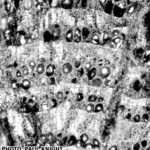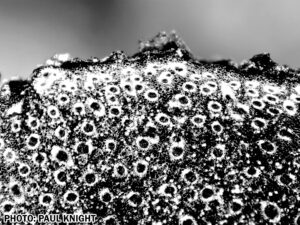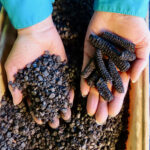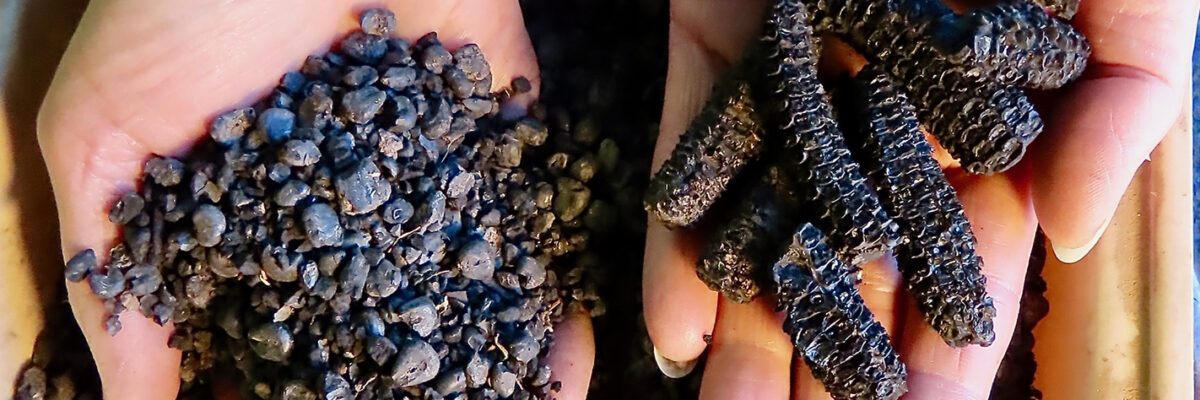By Paul J. Knight, Mikaela Buscher and Jenny Lisignoli
Until the modern era, wood was the primary component in the construction of structures and tools. Concurrently, seeds and grains were the basis of sustenance and ultimately agriculture. Seed identification relies primarily on the analysis of outward features such as size, shape, and anatomical configuration, but wood identification requires a microscopic analysis to identify specific cells arrayed in distinct patterns.
Plant parts are living material and subject to the forces of decomposition. Although there are examples of ancient seeds, wood, and materials created from plants surviving for thousands of years in specific climate conditions, eventually these materials would succumb to decomposition.

However, when wood or other plant parts are subject to burning, a remarkable change occurs in their structures. In wood, the softer living tissue is stripped away leaving a carbon skeleton retaining many of the structures of live wood. Within seeds the tougher outer seed coat is retained like a carbon cast of the living seed. Carbonized seeds and wood are no longer subject to biological decomposition. Such seeds and wood fragments have been found in prehistoric archaeological sites across the continent and around the world. Carbonized wood fragments have even been recovered from Triassic fossil deposits in Utah and Colorado that are over 200 million years old. Like diamonds, carbonized plant parts can theoretically exist forever.

Consequently, archaeologists regularly collect soil samples from prehistoric sites that are examined for the presence of carbonized seeds or wood fragments. The study and identification of this material is referred to as archaeobotanical analysis and is an integral part of investigating prehistoric archaeological sites. NV5 maintains an archaeobotanical lab for the identification of carbonized plant materials with a reference collection containing hundreds of species of modern seeds, as well as nearly 150 different species of carbonized wood samples. These samples represent most of the common genera and species found across the western United States. Archaeobotanical analysis has become a standard process for carbonized woods and seeds collected from prehistoric archaeological sites. These materials do not just provide insights into what seeds were eaten, or which woods were used for fire, tools, or construction; they provide clues about the ecology of the prehistoric landscapes, as well as vignettes into the everyday lives of the people that used them.
Although archaeobotanical analysis is principally utilized for archaeological and paleobotanical investigations, it has applicability for contemporary forensic studies. NV5 scientists have experience volunteering their forensic botany capabilities for law enforcement agencies on cases in the past. Specifically, samples of fragmentary plant remains that were collected as evidence were examined to determine where they might occur in relation to a crime scene.

Archaeobotanical investigations and NV5’s large reference collection of diagnostic plant materials is just a part of the biological and cultural resources consulting support we provide to facilitate projects. For more information contact: Paul Knight at paul.knight@nv5.com

